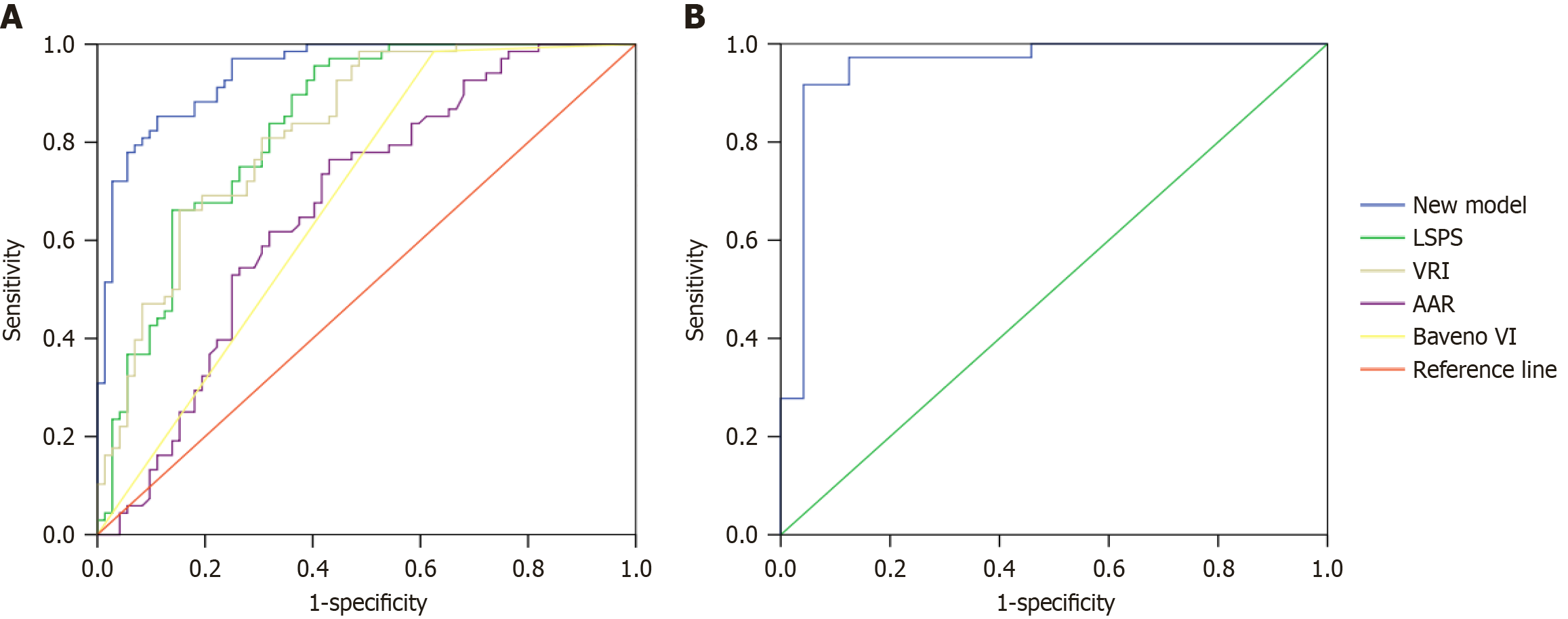Copyright
©The Author(s) 2025.
World J Gastroenterol. Sep 7, 2025; 31(33): 107408
Published online Sep 7, 2025. doi: 10.3748/wjg.v31.i33.107408
Published online Sep 7, 2025. doi: 10.3748/wjg.v31.i33.107408
Figure 1 Area under the curve of various models for predicting clinical decompensation in patients with viral cirrhosis.
A: Modeling group; B: External validation group. The area under the curve of the new model in predicting clinical decompensation in patients with viral cirrhosis was 0.944 in the modeling group, which was greater than that of the liver stiffness-spleen diameter-to-platelet ratio score, variceal risk index, aspartate transaminase-to-platelet ratio index, and aspartate transaminase/alanine aminotransferase ratio, which was 1 in the external validation group.
Figure 2 Calibration scatter plot of patient data.
A: Modeling group; B: External validation group. In predicting patients in the modeling group and external validation group, the scattered points fluctuated around the reference line without significant deviations.
Figure 3 Adjusted decision curve analysis of patient data.
A: Modeling group; B: External validation group. The black line indicates that in extreme cases, the new model predicted that there was no clinical decompensation in patients with viral cirrhosis, and the clinical net benefit was 0. The gray curve indicates that in extreme cases, the new model predicts that there is clinical decompensation in all patients with viral cirrhosis, and the clinical net benefit is the negative slope. The red line indicates that the new model has a net clinical benefit. The red line is greater than the black and gray lines are, indicating that patients in the modeling group can benefit from the new model.
- Citation: Yang LB, Gao X, Xu M, Li Y, Dong L, Huang XD, She X, Zhang DY, Zhang QW, Liu CY, Fan ST, Wang Y. Noninvasive model based on liver and spleen stiffness for predicting clinical decompensation in patients with cirrhosis. World J Gastroenterol 2025; 31(33): 107408
- URL: https://www.wjgnet.com/1007-9327/full/v31/i33/107408.htm
- DOI: https://dx.doi.org/10.3748/wjg.v31.i33.107408















